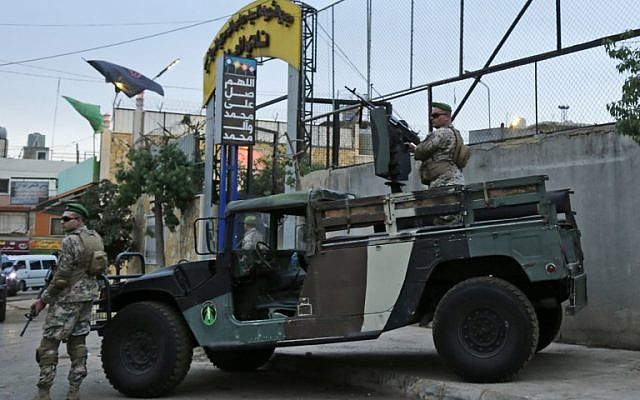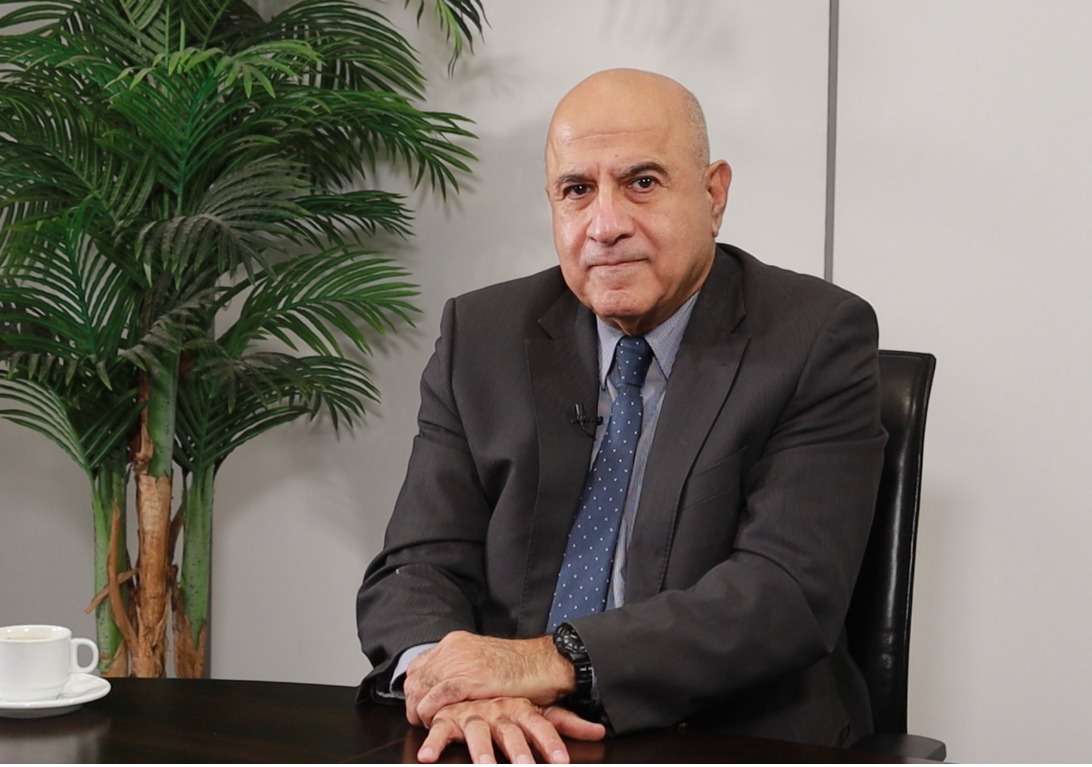Hezbollah’s Urban Missile Factories Put Civilians at Risk
حنين غدار وماثيو لفيت/نقلا عن موقع معهد واشنطن/وجود مصانع صواريخ لحزب الله في المناطق السكنية اللبنانية تعرض المدنيين للخطر
Hanin Ghaddar and Matthew Levitt/The Washington Institute/October 05/18
Even if exposing missile sites does not convince the group to dismantle them, it would at least counter the narrative that ‘resistance’ is good for the Lebanese people and economy.
Speaking at the UN General Assembly on September 27, Israeli prime minister Binyamin Netanyahu accused Hezbollah of building missile production sites in the Ouzai neighborhood of Beirut. The group reportedly intends these underground facilities—located in the middle of an urban area near mosques, homes, schools, and the international airport—to convert regular missiles into more accurate precision weapons. It is unclear whether they are already operational or not.
Israel has repeatedly made clear that it cannot allow Hezbollah to produce new missile variants or upgrade its existing stockpile domestically. Yet the group continues to pursue that very goal, placing Lebanese lives and property at tremendous risk in the process.
MISSILE ACCURACY PROJECT
Within minutes of Netanyahu’s speech, the Israeli military released video and photos of three Beirut sites reportedly established to improve the precision of Hezbollah’s missiles—a goal that the prime minister tied directly to Iran. His UN revelation is by no means the first time Israel has signaled that it is closely tracking such efforts.
When Netanyahu met with Russian president Vladimir Putin in Moscow this January, the two discussed the missile facilities Hezbollah was building in Lebanon. At the time, Netanyahu warned that the country was “becoming a factory for precision-guided missiles that threaten Israel.”
Then in May, while hosting a meeting of his foreign counterparts, Israeli Air Force chief Maj. Gen. Amikam Norkin displayed a photo of an F-35 stealth fighter flying over Beirut in broad daylight. The implications of this show of force were twofold: that Israel could hit targets in Beirut at will, and that there were targets in the capital it felt may need hitting. Netanyahu made this threat explicit when he showed aerial photos of the Beirut missile sites at the UN, warning, “Israel knows what you are doing. Israel knows where you are doing it. And Israel will not let you get away with it.”
Speaking at a counterterrorism conference in early September, former Mossad deputy chief Naftali Granot noted that Hezbollah had “recently received small numbers of GPS precision-guided systems that will help it to convert some heavy rockets into accurate missiles.” Later that month, Israeli airstrikes in Syria reportedly targeted specialized machinery for producing precision missiles, which at the time was en route to Hezbollah. Those strikes spurred Syrian air defense units to fire a flurry of ill-aimed missiles, mistakenly downing a Russian military plane and thereby raising the stakes of Israel’s air operations against the group’s strategic weapons.
USING HUMAN SHIELDS
The Beirut revelation is not the first time Hezbollah has been caught using Lebanese civilians as human shields for weapons or production facilities. In July 2017, for example, Israel released aerial photos of southern village locations where the group had built a rocket factory and arms warehouse. One of the structures was located about 110 meters from a pair of mosques. The IDF reported at the time that Hezbollah routinely places rocket launch sites and other firing positions in the middle of populated areas, along with “a network of underground tunnels beneath civilian homes and structures to allow its fighters to move freely between posts.”
Likewise, the group often placed military infrastructure near civilians during the 2006 Lebanon war. In the southern Shia village of Qana, for instance, photographs from the conflict showed an arms warehouse directly across the street from a mosque. And about thirty squads of Hezbollah fighters operated in the village of Aita al-Shab, many based inside houses.
The group understands how dangerous this tactic is to their countrymen. In fact, it deliberately used sensitive civilian sites as military facilities during the 2006 war with the understanding that they would be attacked, apparently believing that this would increase the difficulty of Israeli operations in southern Lebanon. When detained Hezbollah soldier Muhammad Abd al-Hamid Srour was asked afterward if he knew that firing a missile at an Israeli tank from a civilian house would lead to the home’s destruction, he replied that firing was still “in the general Islamic interest,” and “that if the house was destroyed, it would simply be rebuilt after the war.” His claim that all homes were supposed to be evacuated before the fighting began seems like dubious comfort to those affected, even if true.
This mindset helps explain why the group’s efforts to establish arms production infrastructure inside Lebanon appear to have stepped up in the years since that destructive war. In July 2017, the French magazine Intelligence Online published information confirming that Hezbollah was building two new domestic weapons factories: one near the northern town of Hermel to produce longer-range Fateh-110 missiles, and another between the southern coastal towns of Sidon and Tyre to produce smaller munitions. Earlier that year, the Kuwaiti newspaper Al Jarida reported that Iran had established multiple facilities fifty meters below ground and protected them from Israeli bombardment with multiple layers of defenses, citing an unnamed deputy head of the Islamic Revolutionary Guard Corps.
NOT IN MY BACKYARD
After the 2006 war, Hezbollah’s constituency accepted the group’s “Divine Victory” narrative, believing that the outcome would deter future Israeli attacks and reap financial compensation from Iran. Yet this also meant that they regarded the war as the final round in major hostilities with Israel.
Indeed, the relatively long period of quiet (2006-2018) along the border encouraged many Shia to start thinking about the future, in contrast to their past mindset of perpetual war footing. Recently, new businesses have proliferated in Shia strongholds such as the Beirut suburb of Dahiya and further south. Hotels, restaurants, and modern cafes have opened in every major town, with backing from Shia investors at home and abroad. This entrepreneurial mentality has persisted despite the ongoing war next door in Syria. Meanwhile, the national economy stands to benefit significantly from burgeoning energy exploration in the Mediterranean.
Hezbollah recognizes that the growing signs of another conflict with Israel could stunt such developments. Moreover, if war breaks out, the Lebanese people likely know that they would receive much less reconstruction funding from Gulf Arab states than they did after the previous war, due to both heightened Sunni-Shia tensions and donor fatigue. This seems like a sobering realization given the wide upscaling of Hezbollah’s arsenal and forces, which would heighten the expected destruction of the next war and push the reconstruction process well past the seven years the group admitted were necessary to recover from the last one. In short, the Shia feel they have much more to lose today, so they have less tolerance for officials who talk of war with Israel.
POLICY RECOMMENDATIONS
In light of this attitude change, publicly exposing Hezbollah’s missile factories may be the most effective way of exploiting rifts within the group’s base and, perhaps, making it think twice about building weapons inside Lebanon. When Netanyahu revealed the exact locations of the Beirut sites, the people living near them—mostly Shia civilians who support Hezbollah—had ample cause to worry that Israel may bomb the facilities at some point, potentially damaging their homes and killing their loved ones in the process.
The alternatives to such exposure are hardly encouraging. The Lebanese government is unlikely to do anything about Hezbollah’s domestic weapons production. On the contrary, Beirut has repeatedly proved willing to cover it up, and the May elections only increased Hezbollah and Iran’s influence over the country’s security and military decisions. The UN Interim Force in Lebanon (UNIFIL) is also unlikely to act given its observer mission.
Yet the people living above and around Hezbollah’s missile facilities might take action. After the 2006 war, some residents in the south demanded that the group remove its missiles from their lands. Many southerners—along with Shia living in Beirut suburbs and the Beqa Valley—will likely make similar demands if they come to believe Hezbollah is risking their lives amid looming war. Even if the group ultimately rejects these demands, it will at least be forced to manage a more complicated relationship with its core constituency. Therefore, more of these sites should be exposed, particularly those located in densely populated areas.
In addition, Iran’s support of Hezbollah missile development directly violates UN Security Council Resolution 1701, which ended the 2006 war and mandated “no sales or supply of arms and related materiel to Lebanon except as authorized by its Government.” Hezbollah would have trouble exploiting that exception given that Washington, Europe, and key Arab states regard it as wholly or partly a terrorist organization.
The Security Council and wider international community should therefore consider strengthening and enforcing Resolution 1701, whether through the Lebanese government or in line with Chapter 7 of the UN Charter. A good first step is to mandate international oversight of Beirut’s airport, which could include monitoring flights and inspecting cargo to ensure no weapons or related parts are flown in to Hezbollah.
Ultimately, if the intelligence on the Beirut sites is accurate, then Israel may in fact feel compelled to attack them, much as it has done in Syria. Even if exposing such locations to the public does not convince Hezbollah to dismantle them, it would at least counter the group’s narrative that “resistance” is the best way of defending Lebanon and helping the Shia community prosper.
*Hanin Ghaddar, a veteran Lebanese journalist and researcher, is the Friedmann Visiting Fellow at The Washington Institute. Matthew Levitt is the Institute’s Fromer-Wexler Fellow and director of its Reinhard Program on Counterterrorism and Intelligence.






















